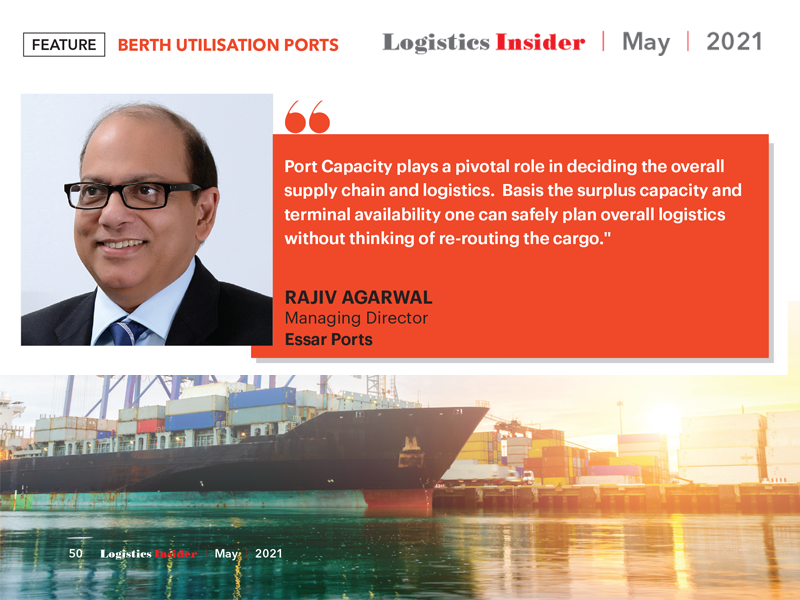Logistics Insider

At a time when the world’s port authorities are under intense pressure to meet growing capacity demands amid constraints, berth utilisation has come up as an answer to effective expansion strategies in order to bridge the gap between demand and capacity. In this feature, Logistics Insider look at the steps by which we can augment berth utilisation in Indian ports and the challenges and solutions that lie therein.
Excerpts from Logistics Insider’s interview with Rajiv Agarwal, Managing Director, Essar Ports Ltd.
UTILISING EXISTING INFRASTRUCTURE TO THE MAXIMUM POTENTIAL
Rajiv Agarwal, Managing Director, Essar Ports Ltd lists down a few suggestions for improving the utilisation of the existing infrastructure.
“While new infrastructure will take time to develop, it is important that the existing berth infrastructure across Ports and Terminals is utilised to a maximum. I believe the same can be achieved through the following:
a) Enabling Policy Provisions
- Ports & Terminals to handle cargo of any customer irrespective its status being captive
- Facilities to handle diverse cargo irrespective of the provisions/ restrictions of license agreements
b) Mechanisation and Upgradation of current infrastructure to increase capacity and significantly reduce turnaround time of ships
c) Undertaking coordinated dredging programme to cater to bigger ships
d) Digitisation of information and leveraging of technology for seamless flow of information thereby facilitating faster movement of cargo
e) Ensuring last mile rail connectivity to Ports for facilitating faster movement of cargo f) Adequate berthing policy to reduce any waiting time for ships which consequently leads to cascading effects g) Rapid Industrialisation in the vicinity of ports for boosting port led manufacturing.”
Click here to read the full interview